The majority of people who get tattoos do so for their deeper meaning. As you might imagine, the hidden messages and symbolism are elevated to a whole new level by prisoners with tattoos. Almost every situation that occurs in prison, every type of offender, and every culture have a tattoo associated with it. It might be a reference to your criminal history or your affiliation with a certain group. When you learn the meaning behind some of the tattoos, they can become quite frightening.
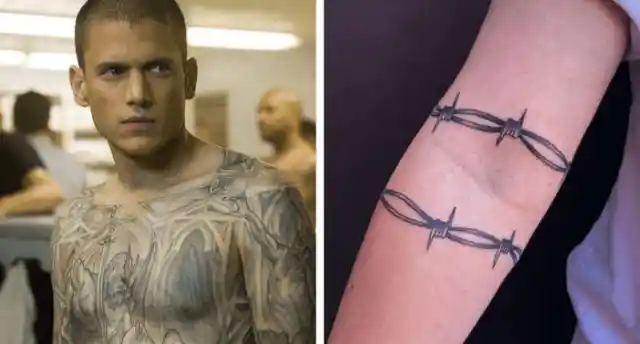
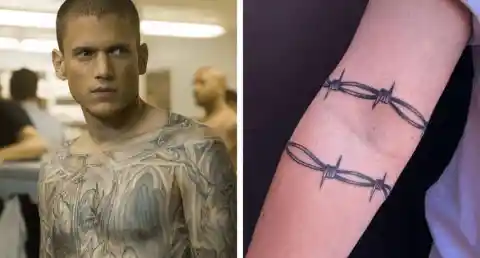
Most people don't comprehend the deeper significance or the history behind certain prison tattoos. Indeed, many people don’t even know how to tell if a tattoo is prison-related. Read on to become one of the few people who understand all the symbolism.
Teardrop Tattoos
The jail tattoo that is most easily recognized is a teardrop. Usually, it denotes that the person has killed someone. The teardrop always involves homicide in some way, shape, or form.
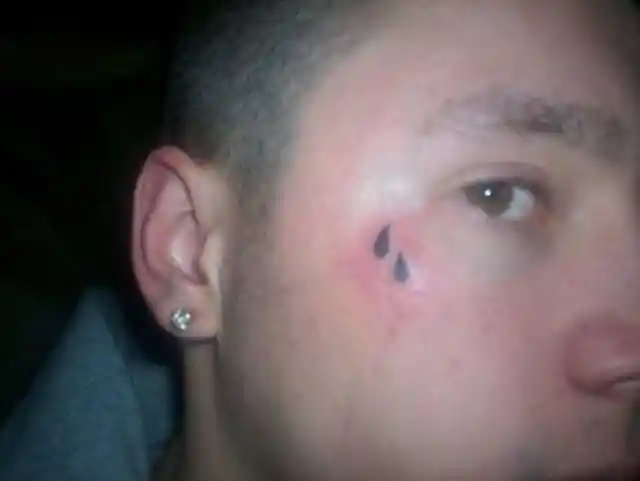
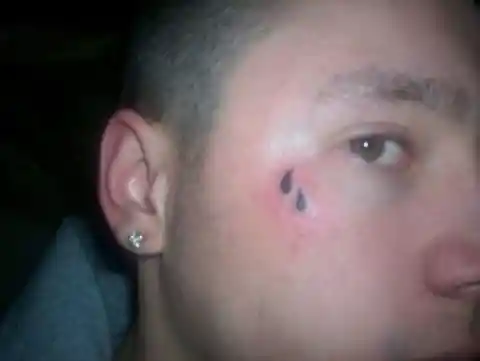
Typically, the teardrop is positioned on a person's face, just below the eye, which is one of the most obvious and sensible locations on the body. This gives the impression that the person is crying in reality. The teardrop tattoo originally stood for the loss of a loved one, but the symbol has gradually been co-opted by those who killed for revenge.
Barbed Wire
The symbolism of the barbed wire tattoo is the strength of people who have overcome difficult situations. During World War 2, tattoos became common among prisoners of war, and they gradually spread to the criminal world.
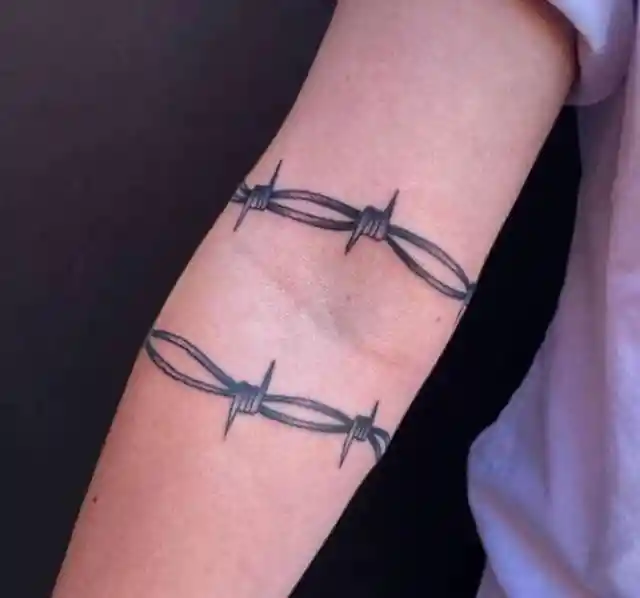
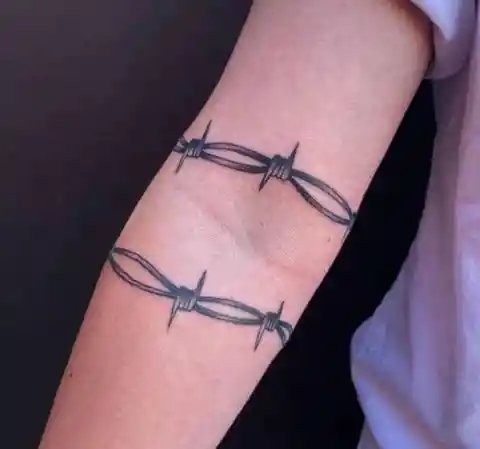
A barbed wire tattoo on a prisoner's forehead indicates that he or she is serving a life sentence without the possibility of parole. On other body parts, each twist of the wire may represent the number of years the individual has been incarcerated. Some young people who have never been to prison get these tattoos because they like the aesthetic.
Clock Tattoos
The clock with no hands is a popular tattoo for prisoners, and the reasons are rather obvious. Indeed, you’re about to discover a variety of tattoos that relate to serving a lengthy prison sentence.
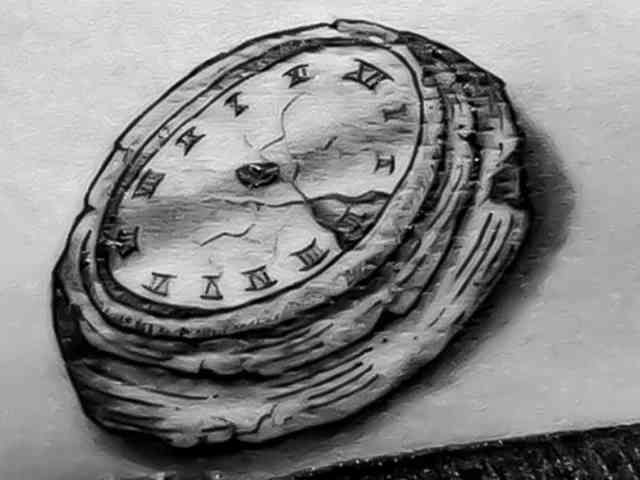
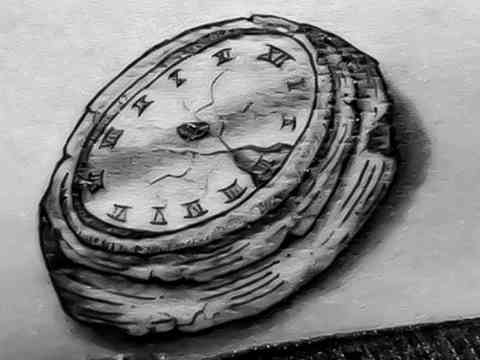
The majority of prisoner wrist tattoos depict the sentencing and time served in jail or prison, but some also depict the crime and the prisoner's history of conviction. As with any piece of art, convicts personalize these templates by adding their own symbols that are specific to their individual narratives.
Huge Cross
In prison, a cross tattoo typically has no special significance, but this is not the case in Russia. People in America often assume that Christianity or other forms of religion are the inspiration for getting a cross tattoo. However, for prisoners, the truth is that having a cross on one's breast is a sign of holding a high rank in a gang.
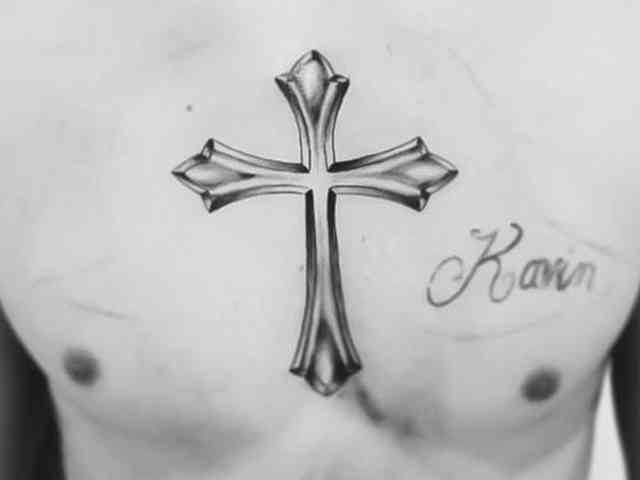
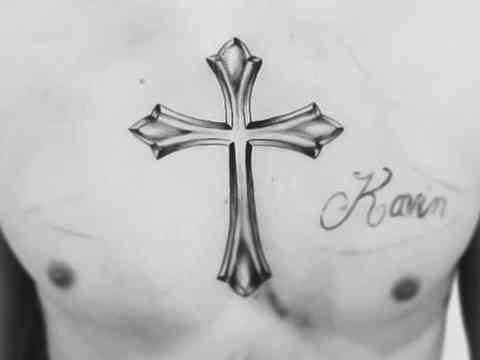
Due to globalization, these tattoos, which originated in Russia, have since traveled to all types of jails and prisons throughout the world. Originally used to mark convicts, they have subsequently evolved into a symbol of violence and general strength.
Five Dots
Five-dot tattoos are frequently used to signify that someone is currently serving or has completed their sentence. The center dot represents the inmate, and the four outer dots stand for the four walls of the prison.
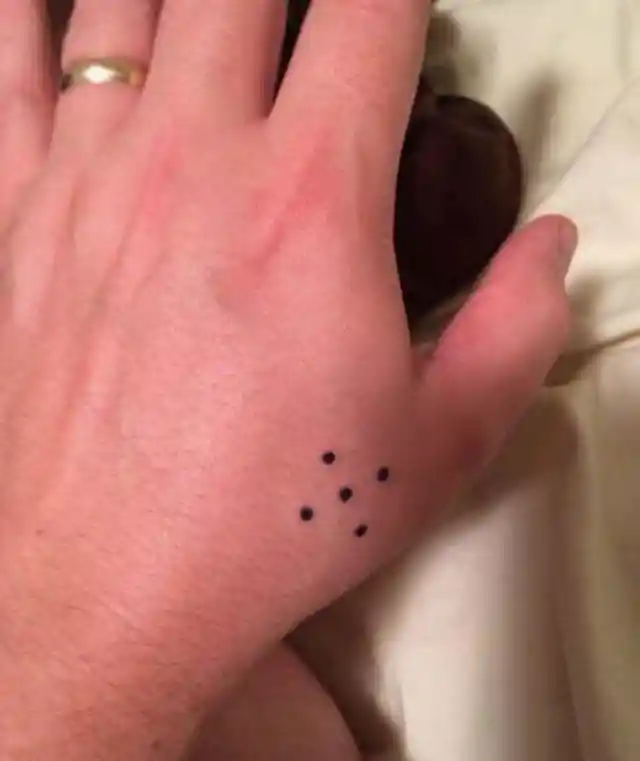
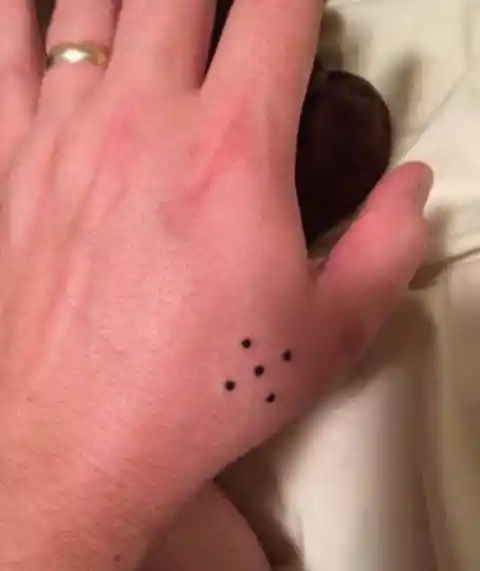
You wouldn't think such a plain tattoo could be packed with any significance, but that's kind of the whole point. Similar to this, three-dot tattoos can signify both religious faith and gang participation. Four-dot tattoos denote contentment regardless of your current circumstances, or prosperity.
The Number Fourteen
Although "14" isn't a prison-specific tattoo, you may occasionally find it on prisoners with ties to the white supremacist movement. The Norteno gang, also known as Latino Kings, primarily operates in California, and for this one special case, the fourteenth letter is “N.” Conveniently, the number 14 can be made to look like the letter N, as you can see in the image below.
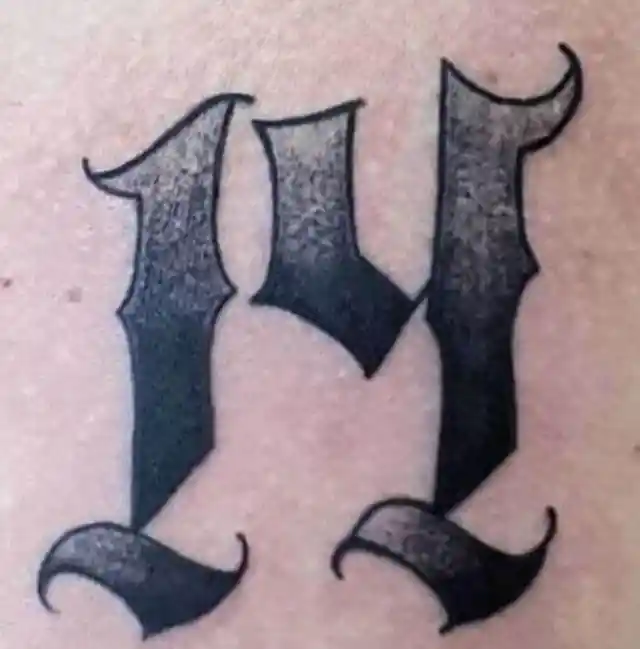
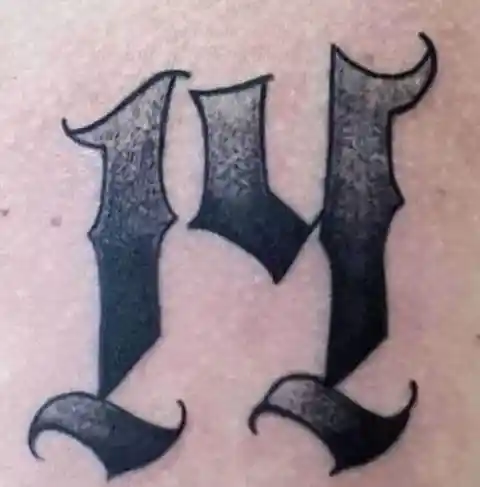
Any tattoo with a deep meaning makes you a target for gangs, much as this one. When a "Latin King" has the number 14 on him, those who have a tattoo that reads "1488" may take offense (more on the meaning of the 1488 tattoo coming up).
Playing Cards
Gamblers in prison will occasionally acquire tattoos of playing cards to show other inmates how interested they are in the game. However, in Russia, certain suits could carry hidden connotations related to the type of crime the prisoner committed.
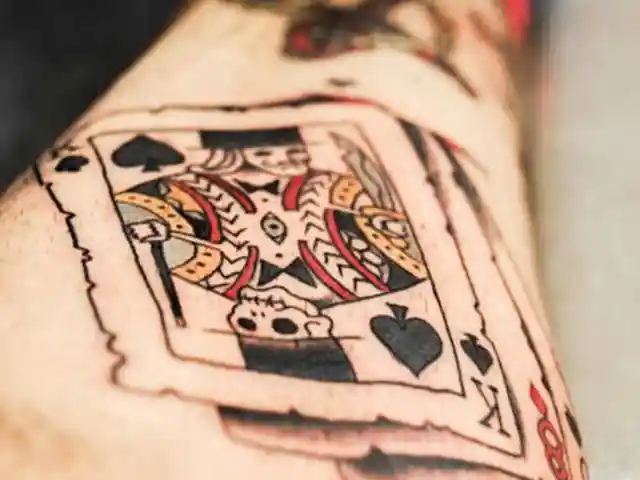
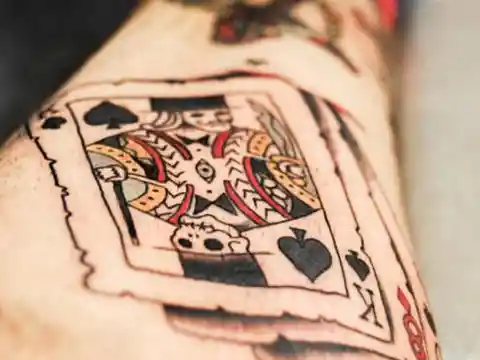
Some people consider Russian playing card tattoos to be among the best body art ever. The prisoner's bad luck and the fact that their lives have become a game of risk is another interpretation of the tattoo. They select a card based on how they see themselves and their circumstances.
The Sinister EWMN Acronym
EWMN is a tattoo that alerts other inmates to who they are dealing with. It means "Evil, Wicked, Mean, Nasty," and most recipients believe these descriptors apply to them. When a prisoner gets this kind of tattoo, it usually means that they are trying to "own" their crime.
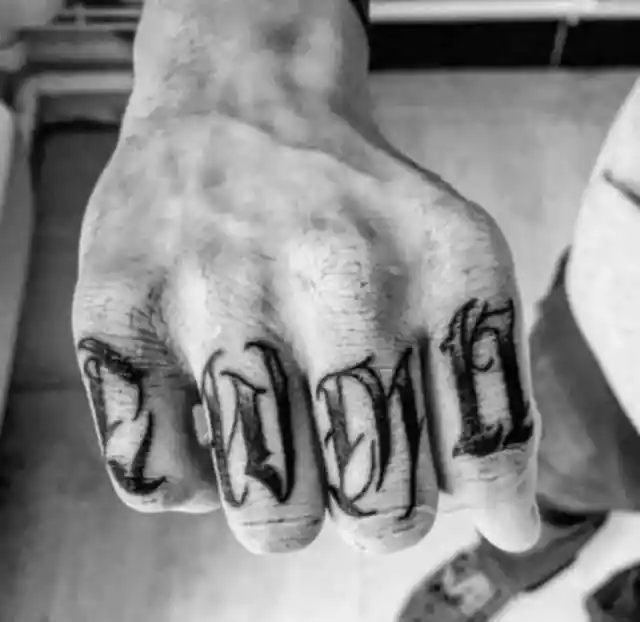
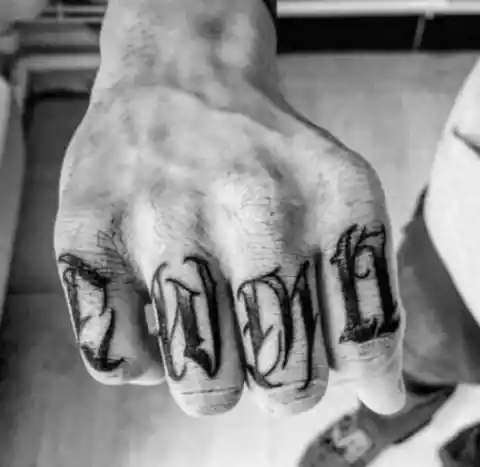
As you are probably aware, a prisoner's status as a criminal can be demonstrated by their tattoos. With a tattoo like this, you can place yourself in a position of authority over other, more contrite, inmates. The harsher your crime and the more assuredly you own it, the greater status you can attain.
The Dark Meaning Behind 1488
People frequently assume this represents a year. In reality, the tattoo's message is divided into two parts: 14 and 88. The number 14 alludes to the Nazi leader David Lane's famous "Fourteen Words," while the number 88 stands for the letter H, the eighth letter in the alphabet.
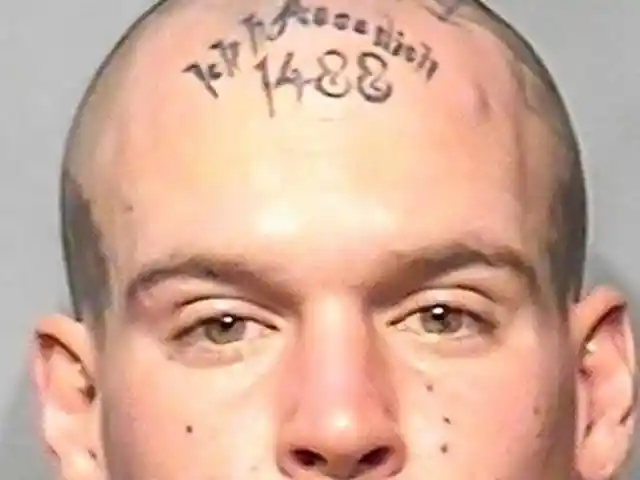
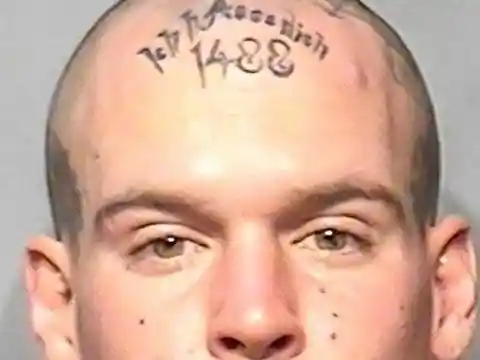
Therefore, these tattoos can be connected to the Aryan Brotherhood, a white gang of Neo-Nazis, as 88 stands for HH, or "Heil Hitler." Hitler is their hero, so they will always bear a physical reminder of him. Gangs may target you if you have a tattoo similar to this one.
ACAB’s Brutal Meaning
Criminals who have engaged in violent altercations with the police or who have no fear of doing so frequently receive the tattoo ACAB, which stands for "All Cops Are Bastards." It can now be found on stickers, signs, and traditional graffiti in addition to ink, but it has recently evolved into more of a political statement.
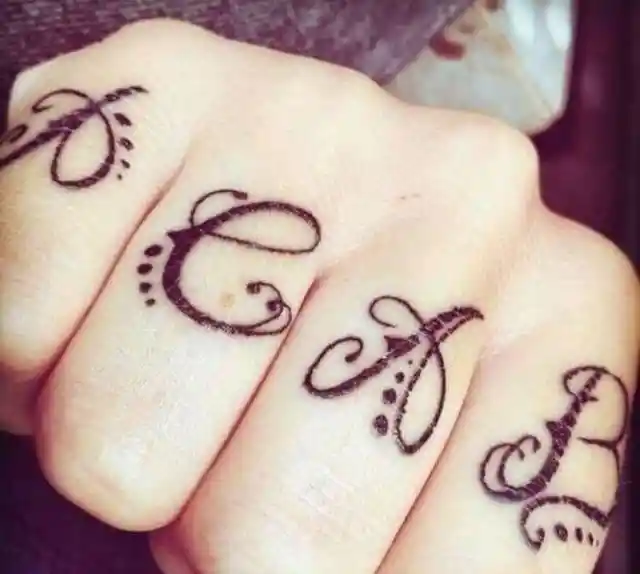
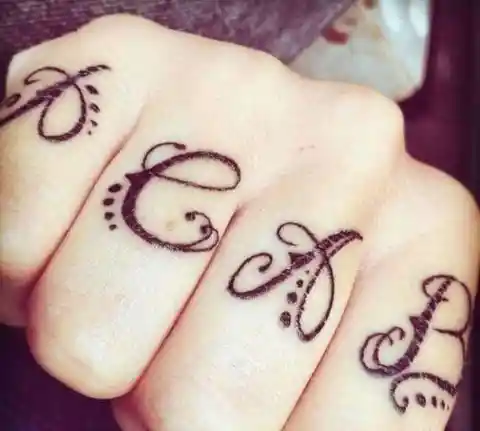
Added layers of coded symbolism are used by inmates who would prefer not to be so open about their views of the police. For instance, "1312" can be used to represent ACAB numerically.
Pointed Crown
A five-pointed crown serves as the Latin Kings' official insignia. They are a Hispanic gang, and although this group has members outside of prison, this is still considered more of a prison tattoo. Unquestionably, one of the most well-liked tattoos in the Western Hemisphere is this one.
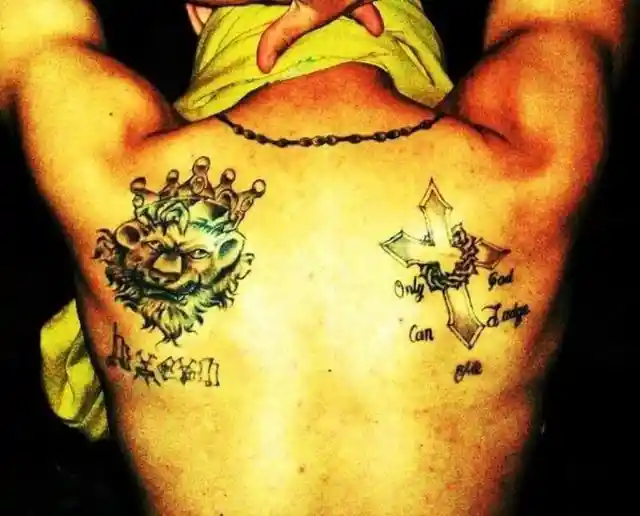
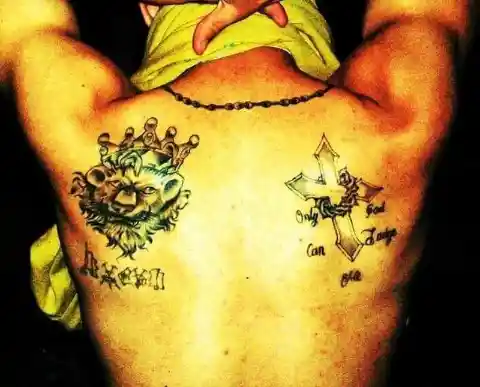
The five-pointed crown is a status symbol that can quickly advance a gang member through the ranks and increase their influence in society at large. What does it mean, though, exactly? In essence, the crown stands for allegiance to and protection from the gang.
The MS-13 Tattoo
El Salvadorian group MS-13 has inmates, and its members frequently have tattoos of their names on their bodies. These tattoos often feature symbolism such as teardrops, dots, crowns, and other distinctive artwork, and they usually appear on prominent body parts like the face or hands.
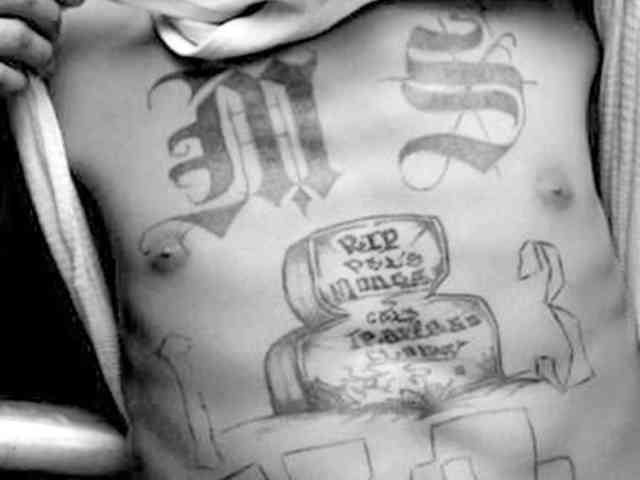
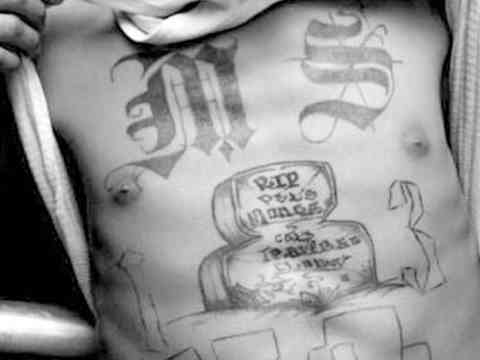
These Mexican Mafia tattoos are often blue, but depending on the situation, they can also be a combination of brown and black. Because it stands for the thirteenth letter of the alphabet, M, any variation of "13," "X3," or "XIII" can be used to identify this group.
Norteno Tattoos
A Norteno tattoo identifies someone as a Nuestra Familia Hispanic gang member. A native of northern Mexico who has musical ties to this region can technically be described as being Norteno. However, these tattoos are specifically linked to the Hispanic gangs in northern California.
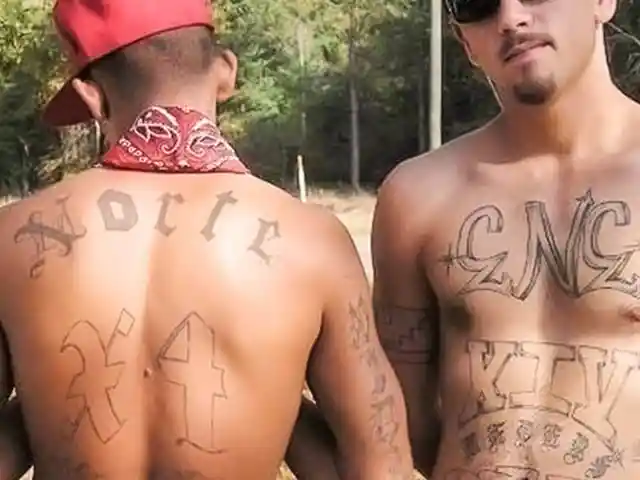
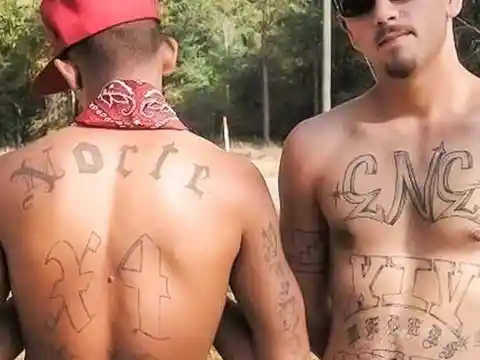
Sometimes, instead of wearing the complete phrase, members will wear a single N or a 14 since it is the fourteenth letter of the alphabet. Gang and prison tattoos are closely associated with entrenched symbolism, and prisoners take any chance they can get to make their messages even more secretive.
Cat Tats
The meaning of cat tattoos in Russian jails has nothing to do with the inmates' love for their pets. Have you ever heard of the term "cat burglar," which describes a robber who enters a structure from a higher story?
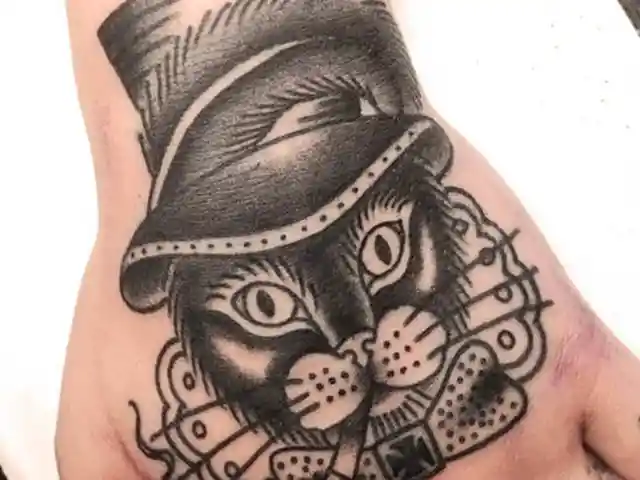
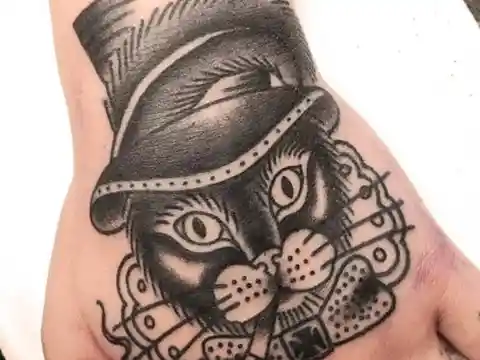
One of the world's oldest representations of crime is the cat. They symbolize particular values and skillful practice, in addition to pointing out that someone is a thief. For instance, the cat might stand in for the thief's amassed wealth, quick reflexes, patience, wisdom, temper, wrath, or even ruthlessness.
The Epaulet
Considering that epaulets are the shoulder fitting on police uniforms, the tattoo may seem odd as a prison tattoo. However, this style of symbolism has a special significance in Soviet Russia.
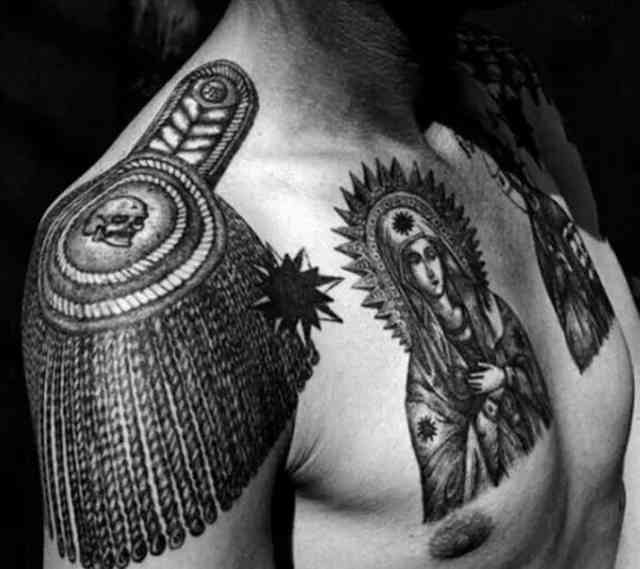
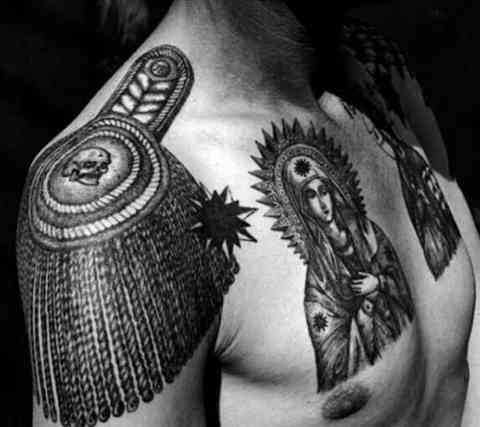
Prisoners with epaulets inked on their shoulders are known leaders in the Thieves in Law. They can be recognized by their rank as either a Lieutenant, Captain, or several other ranks in the gang's hierarchy. Skulls typically indicate that the wearer has previously committed murder if they are visible within the epaulets.
Lenin and Stalin
Prisoners in the Soviet Union occasionally had tattoos of Lenin or Stalin on their chests in the mistaken belief that a firing squad wouldn't shoot at a portrait of their leaders. Unfortunately, this was wholly wrong, but at least the logic offered some hope for people who got the tattoos.
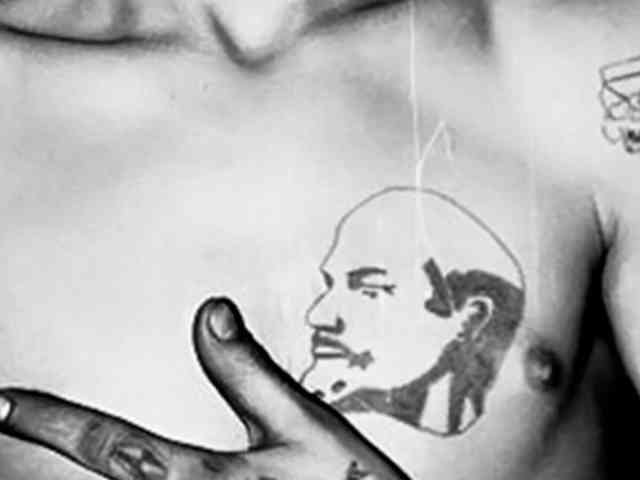
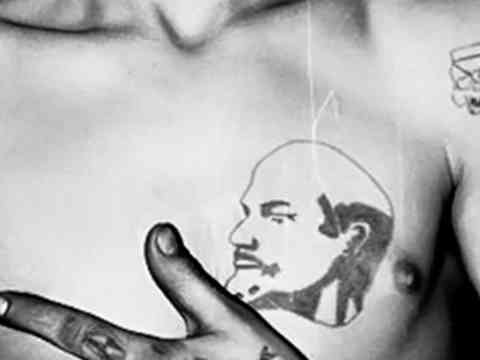
The 3D style is a popular approach to portray the likenesses of Lenin or Stalin. In order to produce a more intriguing image with greater depth, 3D jail tattoos attempt to combine two images, photographs, or symbols.
Hooded Executioner
Although it's very obvious that a prisoner with a tattoo of a hooded executioner has killed someone, the situation is worse than that. This tattoo denotes the murder of a family member.
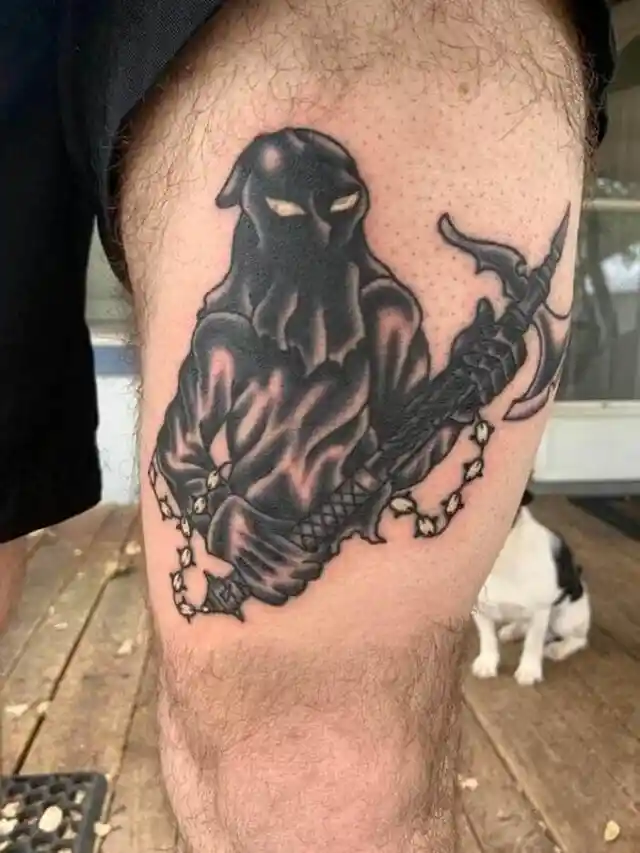
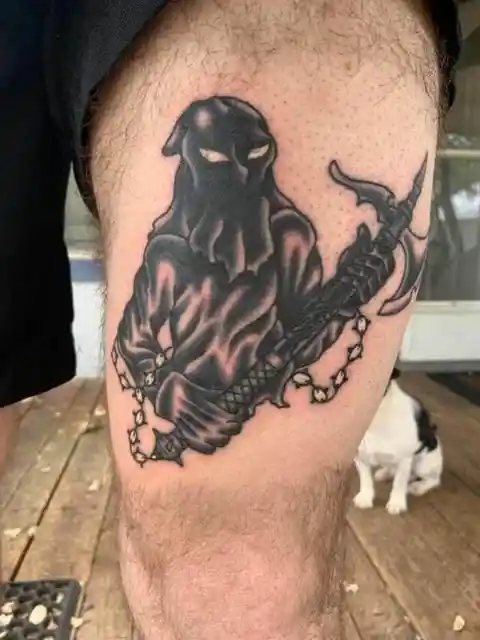
The ink may also stand for contempt for adversaries or deceitful individuals. When someone sees this tattoo, they may immediately think of the slogan "death to traitors," hence the depiction of Death as an executioner. The person with the tattoo is letting other gang members know that he got his revenge.
Spider’s Web
Many of the inmates who have spiderweb tattoos on their elbows are serving lengthy sentences. Like the other tattoos with Russian influences that we previously described, this one is designed to symbolize the passage of time and decay in prison.
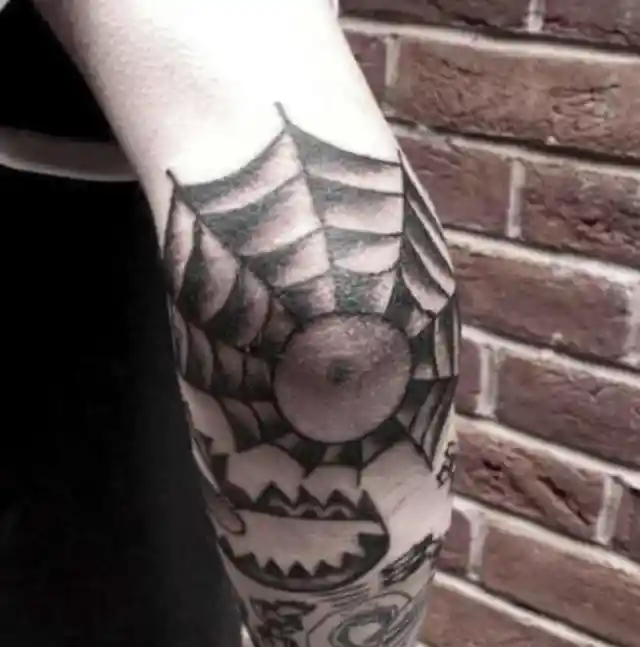
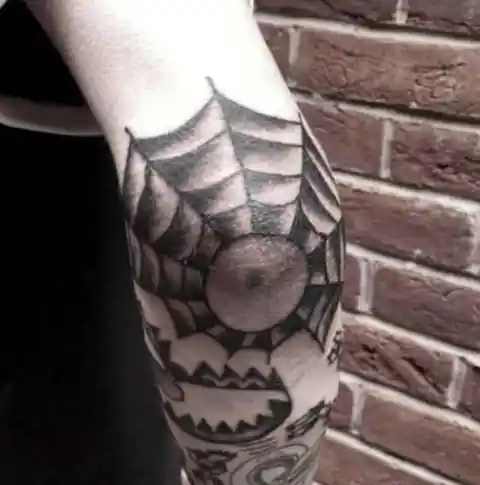
White supremacist movements that demanded the murder of someone from a minority group before “earning” the design are the origin of the spiderweb. Of course, a spider’s web can also be associated with good things besides murder, gangs, prison, and general violence.
Spider Tats
Prisoners' spider tattoos might indicate different things depending on where and how they are positioned. The right shoulder spider is a strong indication of a thief.
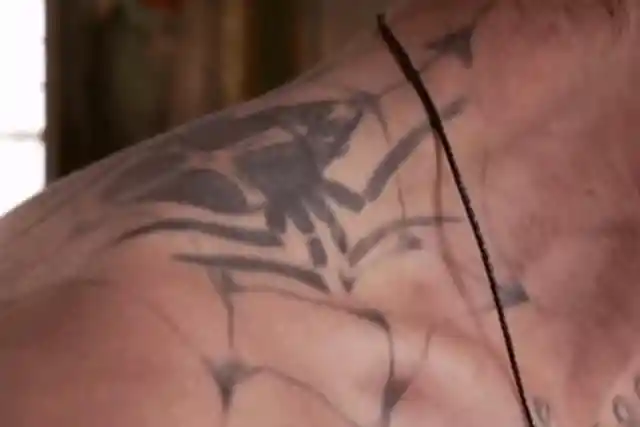
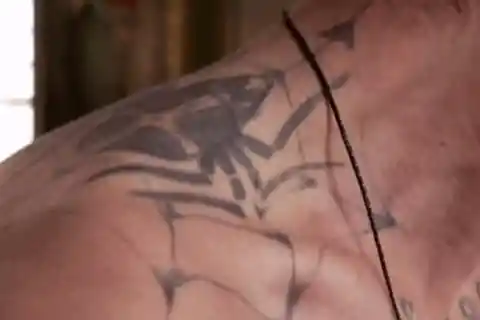
The burglar is still on the loose if the spider is climbing up the shoulder. The thief has finished living a life of crime if the spider is crawling downward. The tattoo may also be applied to the elbow if not worn on the shoulder. The number of curves in the web may indicate the number of years the person has spent behind bars.
Gun Tattoos
Gun tattoos, including pistols, revolvers, and machine guns, are a common motif in American prisons. The picture of a gun, which obviously connotes danger, is linked to a variety of interpretations, such as murder or even assassination.
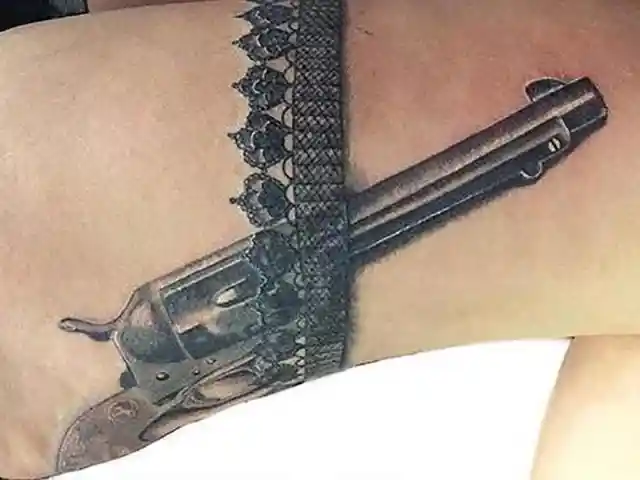
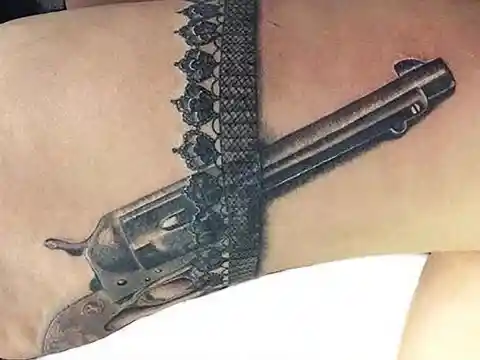
Because guns are such widely used weapons in America, gun iconography isn't constrained to a single area of meaning. In addition to being linked to risk and danger, they can also confer authority on one individual, serve as a sign of self-defense for another, and reflect one's inner "fighting spirit" for a third.
Prison Break
As much as there are tattoos in prison that represent the length of a sentence, there are also tattoos on the opposite end of the scale that represent escapist ideologies. Because breaking out of prison is a difficult feat, wearing artwork depicting an escape is a mark of extraordinary bravery and resistance.


Despite the "prison break" motifs represented in some tattoos, they truly don't have much to do with really escaping from jail. These tattoos, which were influenced by the television program Prison Break, are more about anarchy and defying the system.
Three Dots
It can be challenging to tell which group a prisoner belongs to if you see them with three dots, but they probably belong to one. The tattoo, which reads "mi vida loca" (my crazy life), is connected to the gangster way of life. It does not, however, imply gang membership specifically.
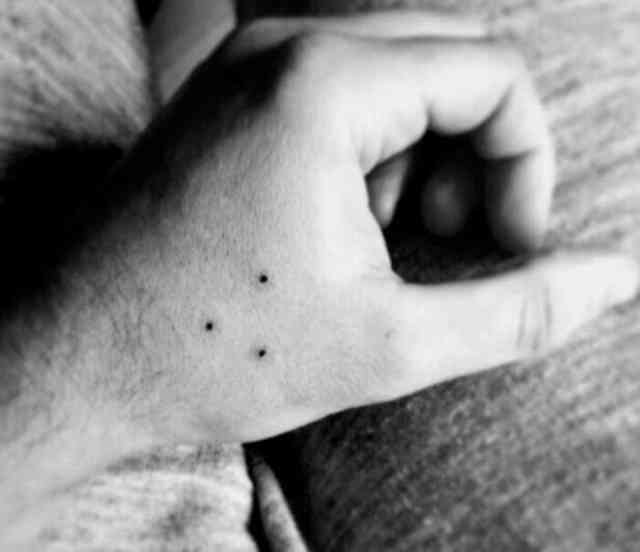
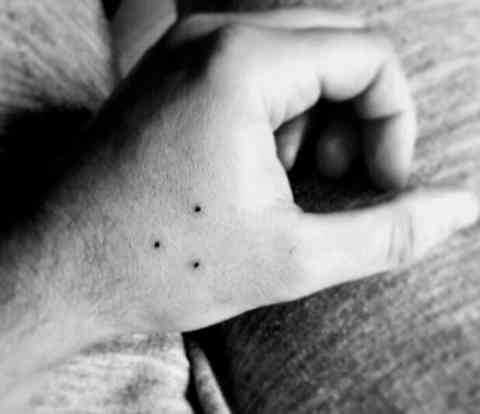
The members of the Mexican mafia are huge lovers of 3-dot tattoos. The Surenos and Nortenos, two distinct factions of the Mexican mafia, each have their own unique symbolic tattoo designs, yet both also use the 3-dot tattoo.
Chains on the Wrists or Ankles
Many prisoners with tattoos conspicuously display chains as a sign of racial unification and camaraderie. Chain tattoos of any kind typically allude to uniting behind a shared purpose in addition to expressing cohesion.
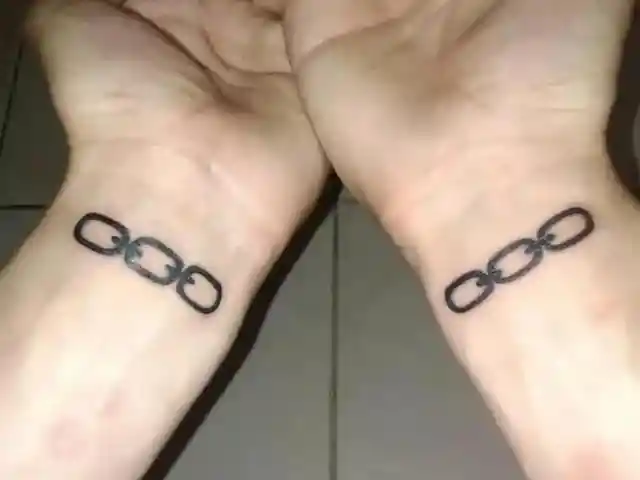
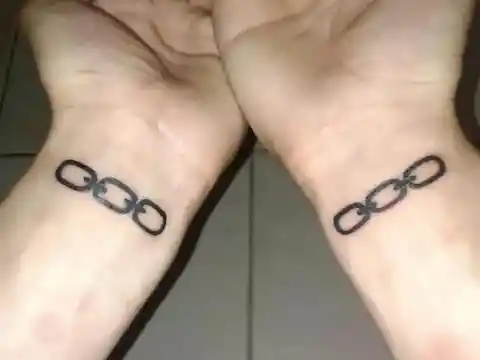
Chains can be associated with slavery, tyranny, and isolation, but they can also be updated with pictures of a broken link to stand for freedom and conquering adversity. Chain tattoos are commonly observed on members of Black Guerrilla Family (BGF) and African-American gangs in California.
Locks and Keys
A lock-and-key tattoo has a more sinister connotation than the usual perception of it as a symbol of unwavering love, typically between couples. In order to distinguish themselves from other gang members, many BGF members tattoo representations of locks and keys onto their bodies.
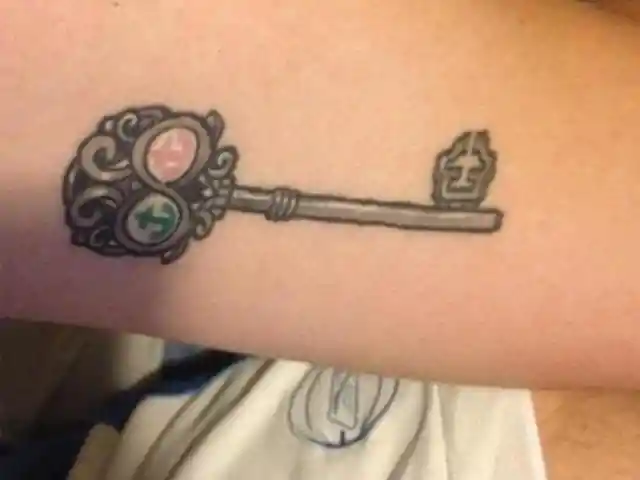
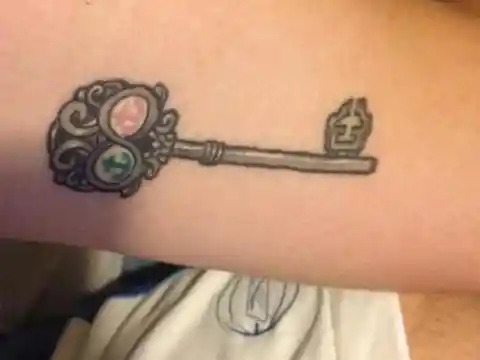
The main purpose of locks and keys is to bring people together and inspire them to support a cause; in the case of BGF, that cause is the socialist revolution. These tattoos have a loyalty symbolism that can be understood.
Animal Symbolism
Animal inspiration is prevalent in gang tattoos that cover a wide range of symbols. Given that the history of the United States is based on nature and religious images, many tattoos in American prisons are influenced by Native American culture.
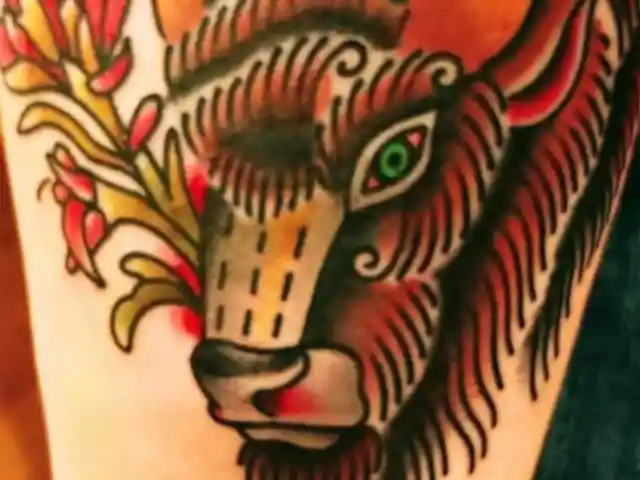
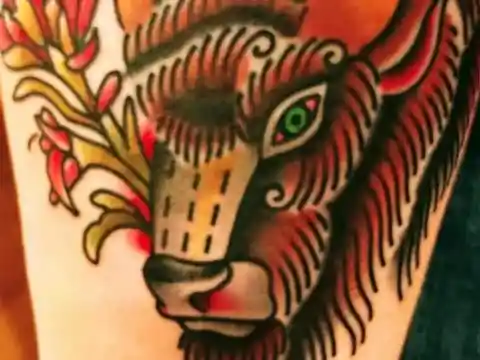
As a result, the tattooing custom among Native American gangs has spread to other prisons. These tattoos are characterized by representations of nature that are sacred to indigenous tribes, such as birds, reptiles, tribal art, and animals in general. They come in a variety of shapes and fashions.
Crown Ring
As a variant of the so-called Claddagh ring, this prison tattoo fad has its roots in Ireland, arising sometime during the 17th century. The Claddagh ring has come to signify more among prisoners than just love and nobility in traditional usage.
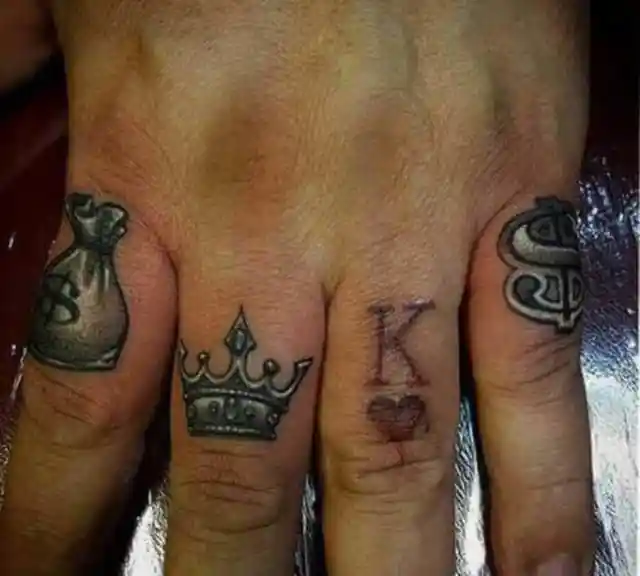
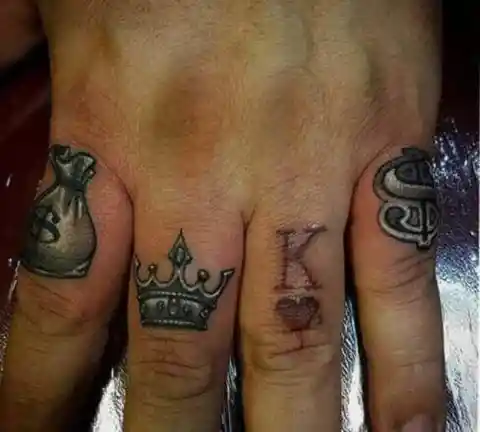
The same concepts of the Claddagh, such as loyalty and status, can be represented by an inking of the crown and ring, but these aren't typically individual goals. As a sign of comradery and shared ideas, individuals who are incarcerated together or who belong to the same gang often get this tattoo.
An Eye for an Eye
The "eye for an eye" prison tattoo fits into the category of ominous imagery that is preferred by non-remorseful offenders. Coloring, shadows, and unconventional lighting are often used by the tattoo artist to make the image spooky. This can lead to some particularly unsettling designs.
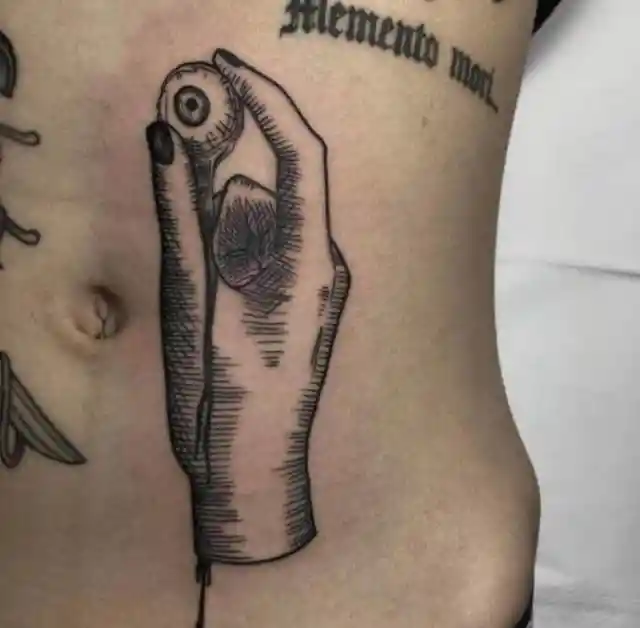
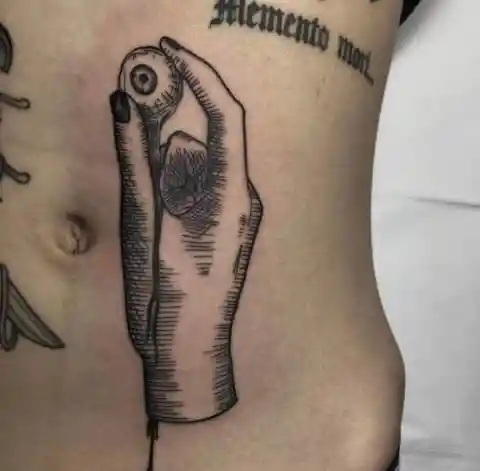
In order to effectively eliminate a single light source and emphasize the whites of the eyes, the majority of artists that attempt this design will choose a technique that involves shading the eye at all angles. With the addition of the shadows, the area appears sunken in, exuding a sinister vibe.
Flowers Aren’t So Sweet
Flower tattoos are common among prisoners of all genders. It is a common misconception that because flowers are used and repeated so frequently, they have no real significance. Prisoners who were convicted before the age of 18 receive flower tattoos as a symbol of their status.
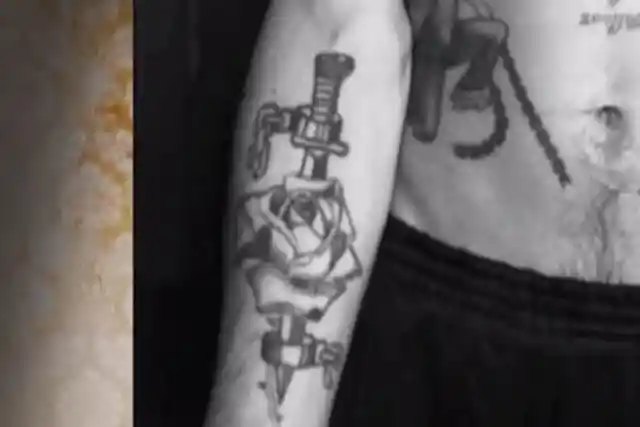
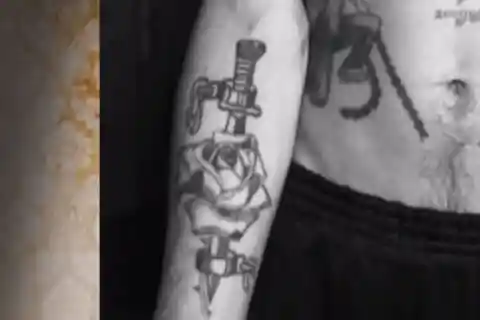
It's likely that you'll join a gang if you're imprisoned when underage. When they are in prison, people who have a floral tattoo typically join gangs. The same concept behind floral tattoos is shared by several Asian gangs.
Not Your Typical Angels
The phrase "Angel Forever, Forever Angel," is frequently used to describe the gang known as the "Hells Angels." They are one of the most well-known motorcycle gangs. Inmates who are members of the "Hells Angels" frequently have the AFFA tattoo on their hands.
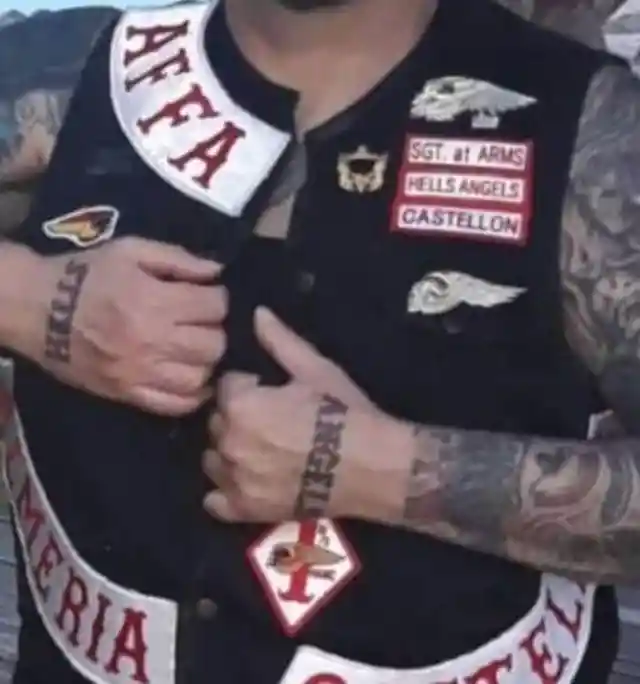
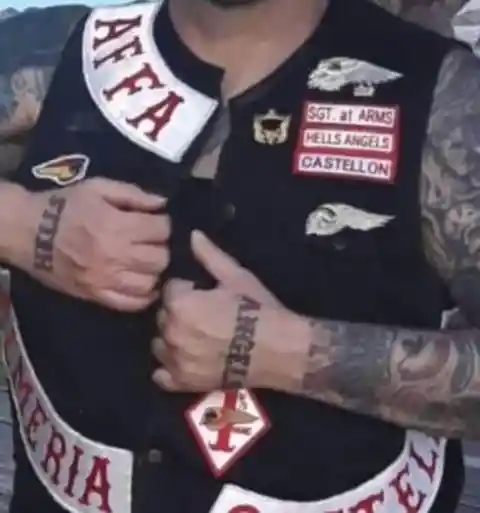
This gang has a range of common tattoo motifs. They are particularly attached to the AFFA one, though. We don’t recommend getting anything that resembles a common Hell’s Angels tattoo as you won’t have a good time if you’re ever seen by a real member.
The Original Madonna
The inmate's Madonna tattoo is a sign that they believe jail to be their true home. Motherly representations suggest coziness, warmth, love, and security; as a result, the prisoner experiences the same level of comfort in their cell as they would get at home.
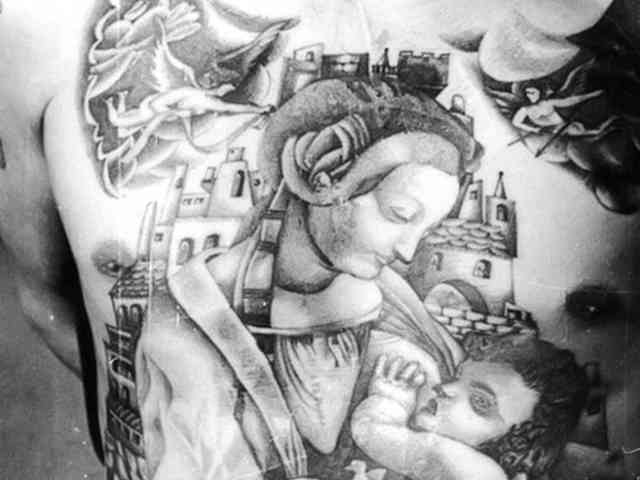
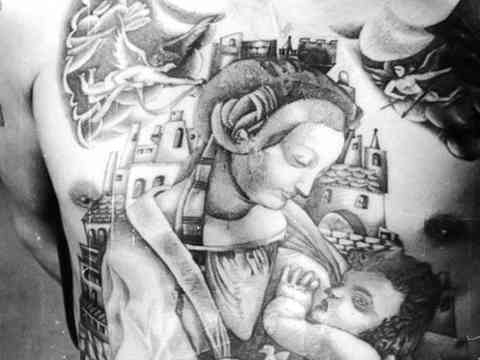
This tattoo might also indicate that the person became involved in crime when they were still very young. The reasoning behind the motif is that they lost their innocence at an early age and yearn for some kind of motherly incarnation – a mentor to lead them through the remainder of their life.
Lightning Bolts
Though you may immediately think of Harry Potter, lightning bolt tattoos have a malevolent hidden meaning. Within the walls of most prisons, thunderbolt tattoos are referred to as hate symbols. An inmate who has a lightning bolt tattoo is a white nationalist.
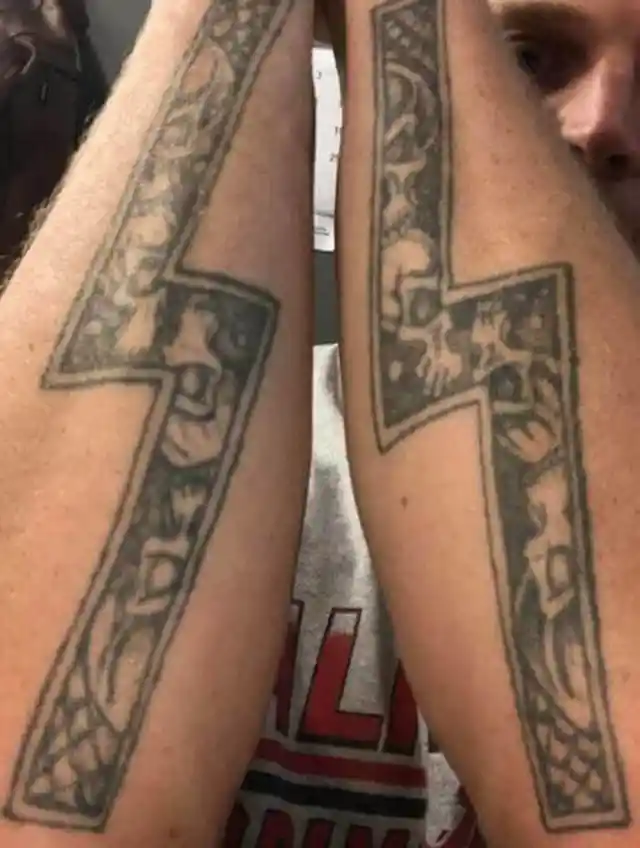
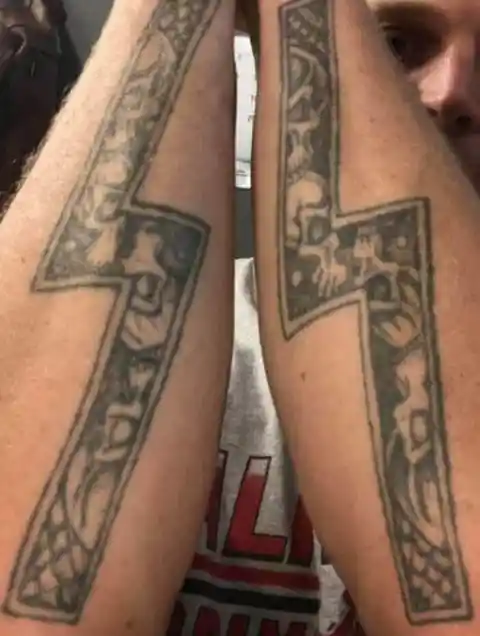
The "SS" of the Nazi Schutzstaffel is symbolized as two lightning bolts, and this emblem indicates that a prisoner is a neo-Nazi. To show their support for the racial ideology of the Nazi party, US prisoners get these "cracker bolts" tattooed on their bodies.
The Symbolism Behind Clowns
Typically, convicts have one joyful and one sad clown face tattooed on their bodies. Clown face tattoos, especially those with a clown smiling and frowning simultaneously, are common among gang members of all races and have various symbolic connotations. Most are a version of "laugh now, cry later" or "my happy life, my sad life," respectively.
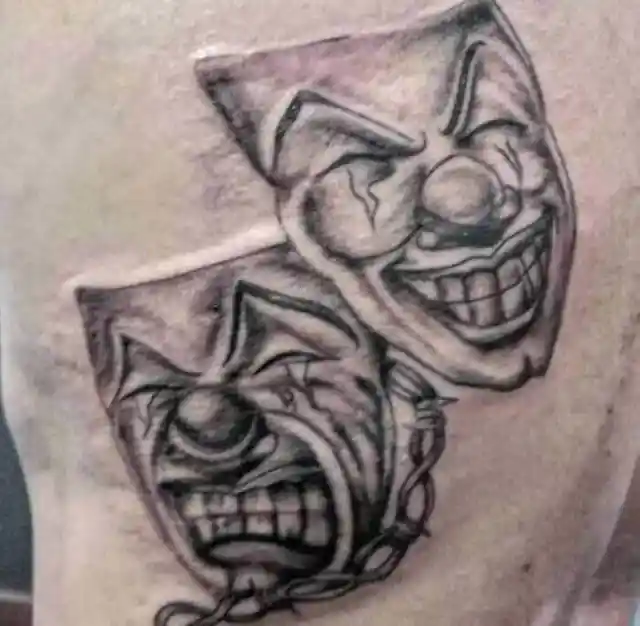
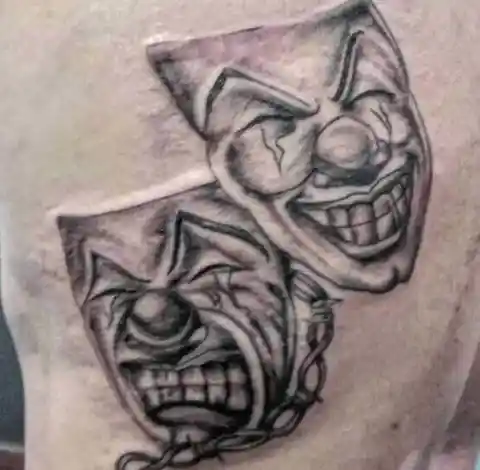
This tattoo has an entirely different meaning in Brazil. You must be a cop killer to have this imagery. As if being in prison wasn't difficult enough, Brazilian inmates with clown face tattoos don't have it easy.
Shamrock Imagery
Many people rightly link shamrocks to Ireland. However, white nationalist groups like the Aryan Brotherhood also embrace the shamrock as a tattoo design. This tattoo's sole purpose is to signify your membership in the brotherhood. A shamrock or four-leaf clover is almost always present on Irish inmates.
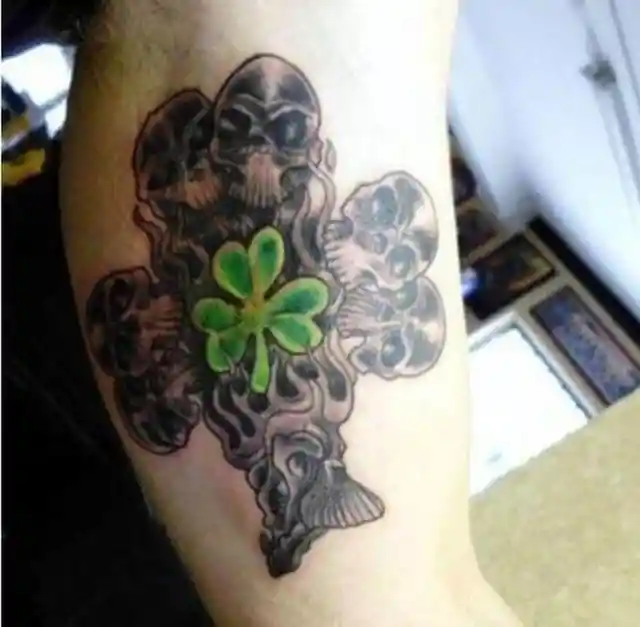
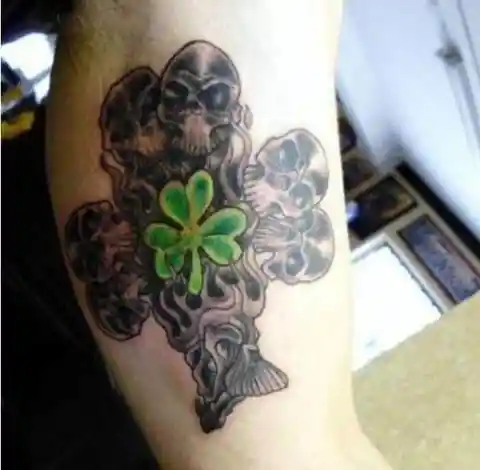
Under the shamrock, you might also find letters or numerals. On the same hand as the shamrock, people frequently have the phrase "number of the beast" or the number "666" tattooed.
A Dagger in the Neck
You don’t want to run into someone who has a tattoo that looks like a blade in their neck. This indicates that the prisoner has committed murder previously and is ready to do it again. It can also indicate that they are available for hire to carry out killings in prison.
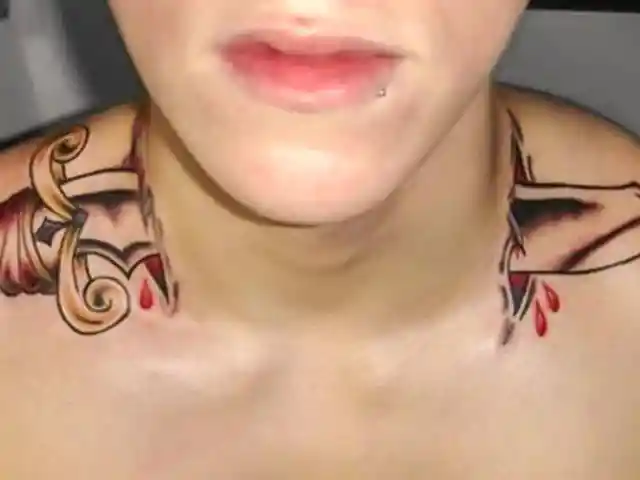
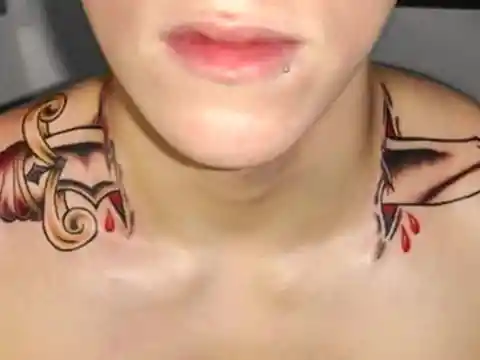
The number of murders committed may be represented by the bloodstains on the blade. Some interpretations of the tattoo also imply that the inmate believes his long captivity has killed him.
Tattoos of Women
You are surely aware by now that Russia has had a significant influence on prison tattoo culture. If inmates have tattoos of ladies on them, it indicates that they have been formally accepted into the Russian mafia.
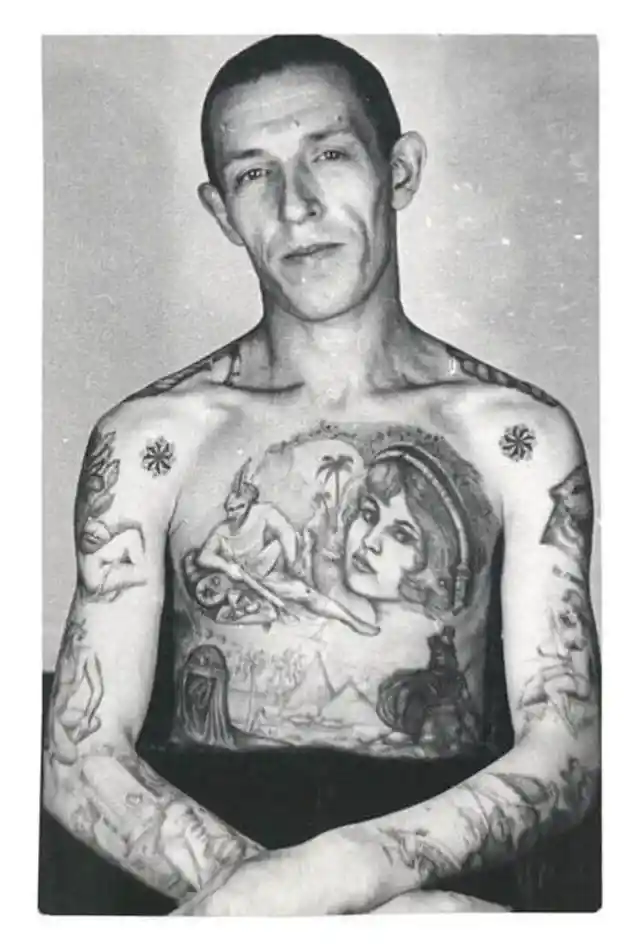
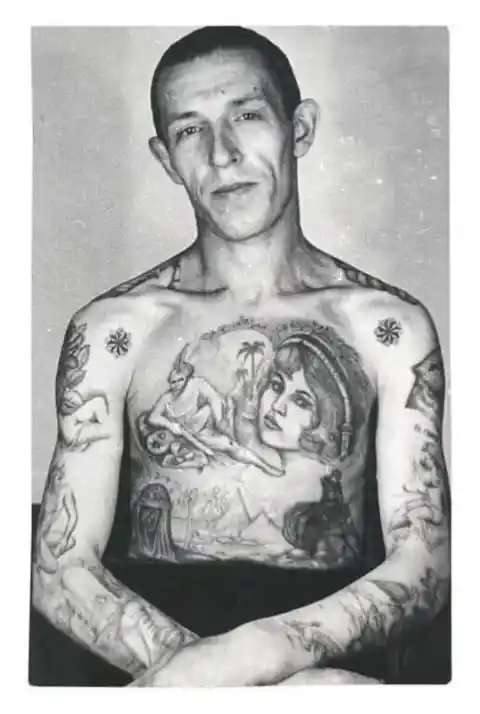
Inmates typically get tattoos of ladies on their chests. The same idea can be conveyed with a tattoo of a rose rather than a woman. On the other hand, if that woman is depicted on the stomach, the tattoo indicates that the bearer may be a sex worker.
Russian Cathedral
Cathedrals, or Kremlins, are recognizable prison tattoos in Russia and stand for time spent behind bars. The number of sentences a convict has served over their lifetime is indicated by the number of domes on their church.
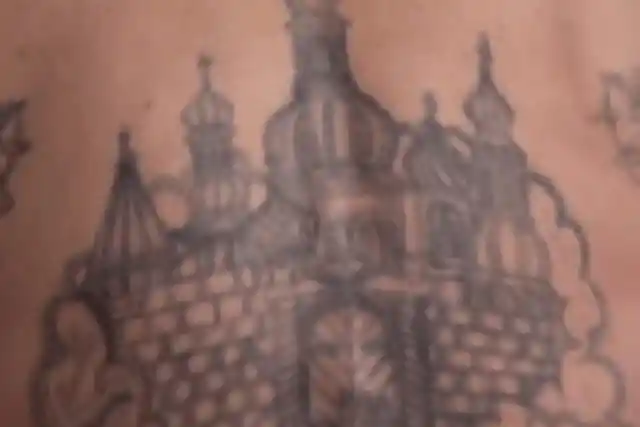
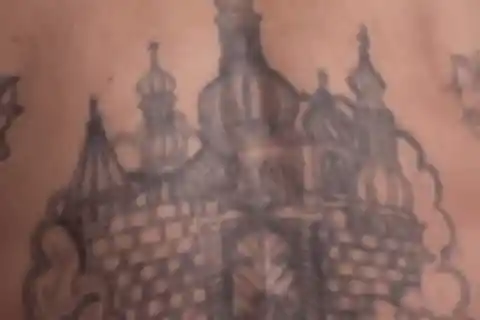
These tattoos can be seen practically anywhere on the body of a prisoner. They are typically inked on bigger parts of the body, like the back or chest, because of their size. In the movie Eastern Promises, Viggo Mortensen's character sports a similar tattoo on his back.
The Valknut
The traditional interpretation that individuals give to their Valknut tattoos is that they are paying tribute to a loved one or friend who has passed away. This is especially true for those who have lost loved ones who passed away during a war, as Valknut is frequently linked to combat.
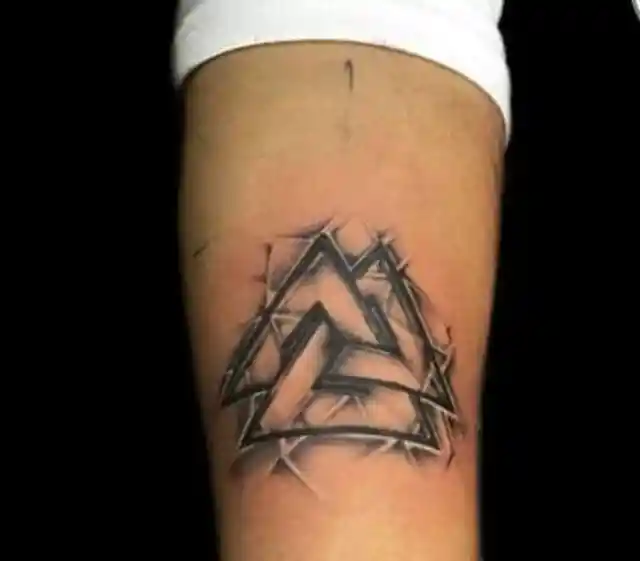
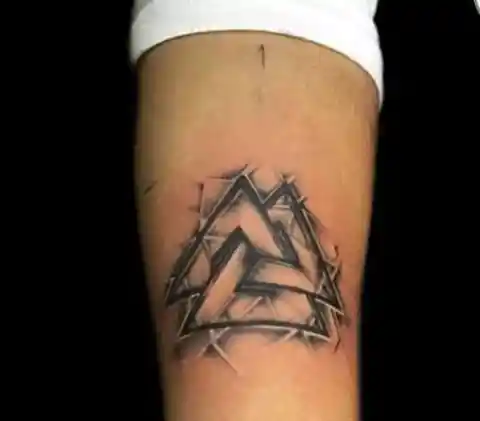
The three interlocking triangles, also referred to as the "knot of the slain" and belonging to the Norse god Odin, are typically tattooed on captives. Some Neo-Nazis truly think that Odin is real and that he supports their cause.
Thieve Stars
The Russian mob refers to the tattoo style below as "thieve stars," and they have a long history that dates back to the time when the Russian Empire had a Tsar. Prisoners' ranks within the organization are indicated by the eight-pointed stars that are affixed on their shoulders.
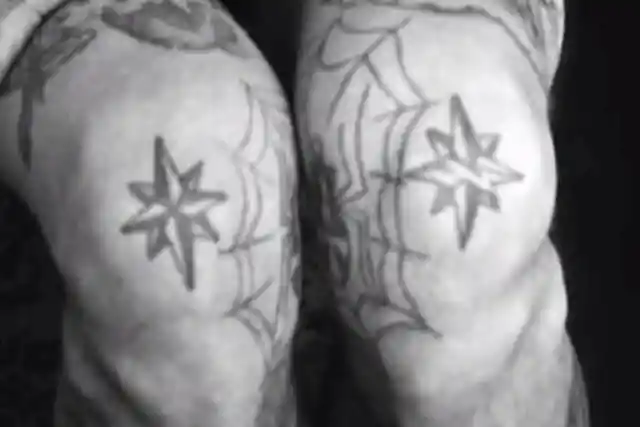
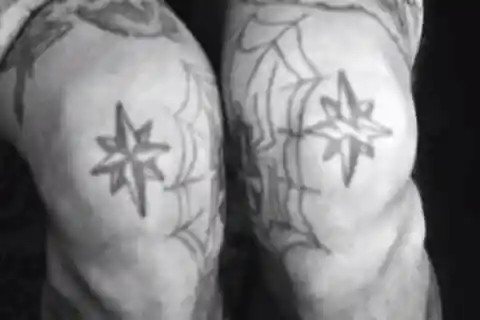
The imagery indicates that they will not submit to the authority of any person. These tattoos were given to those who faced a lengthy sentence and disobeyed all requests for assistance from the police.
Skull Tats
An image of a skull represents defying power. It refers to "baring one's teeth" in opposition to Soviet control. This was done to demonstrate their lack of fear of authorities. By defying authorities, inmates earn these tattoos.
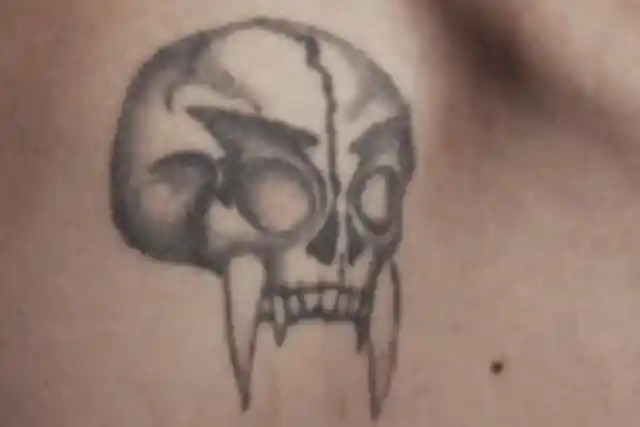
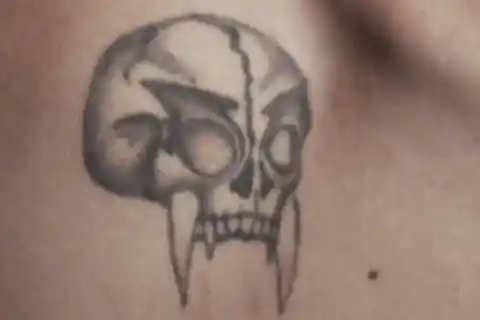
Since the SS used a skull as a sign for their Panzer Division, skulls are also a "fan favorite" among the Neo-Nazis. The words "my honor is my loyalty" are typically added in German right next to the skull tattoo if the bearer is a Neo-Nazi.
Skinhead Tattoos
A gang member's tattoos serve as markers of affiliation. They make it quite clear how loyal this person is, as well as how they feel about outside groups. However, the main distinction with this type of tattooing is that these depictions are coded, and unless a person has spent time in jail, they may not understand every layer of meaning.
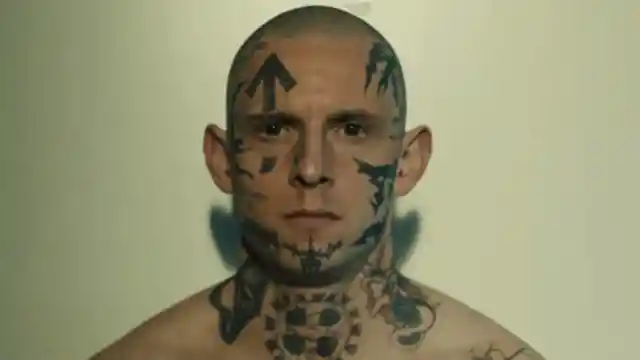
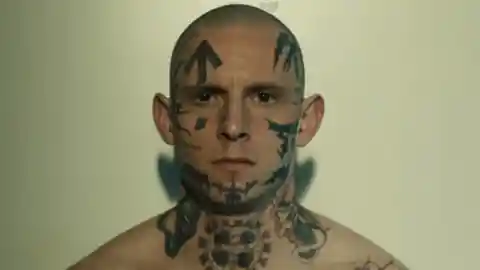
White nationalist gang members typically have insignia like these tattooed on their faces or entire heads. Never is the "Skinhead" tattoo applied alone. They frequently include a range of specific symbols, such as arrows or broken pieces, which all have different meanings.